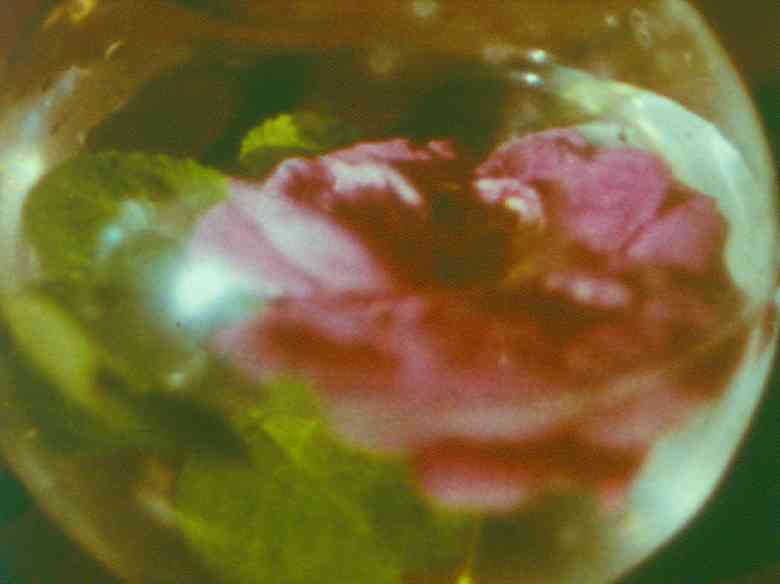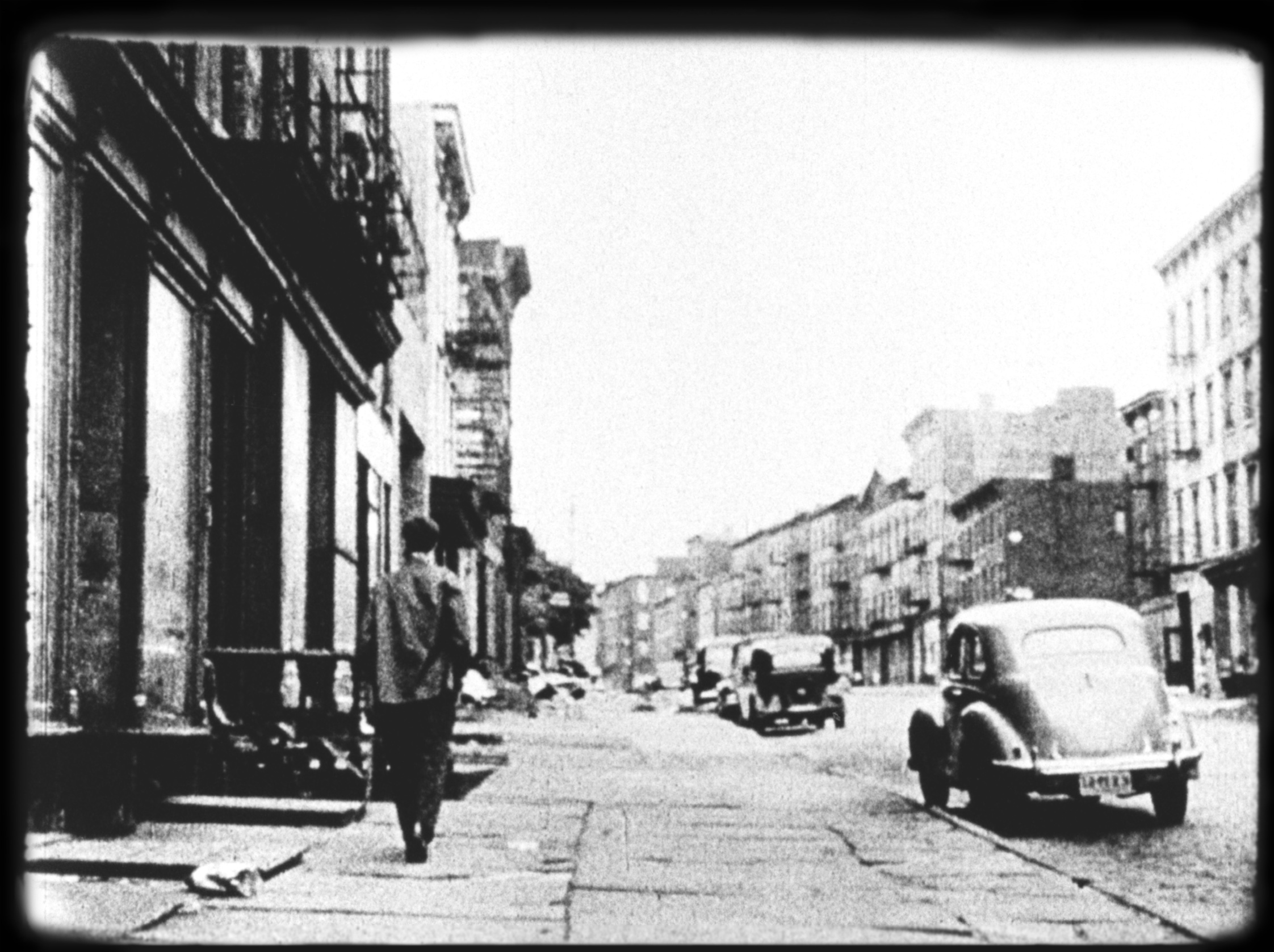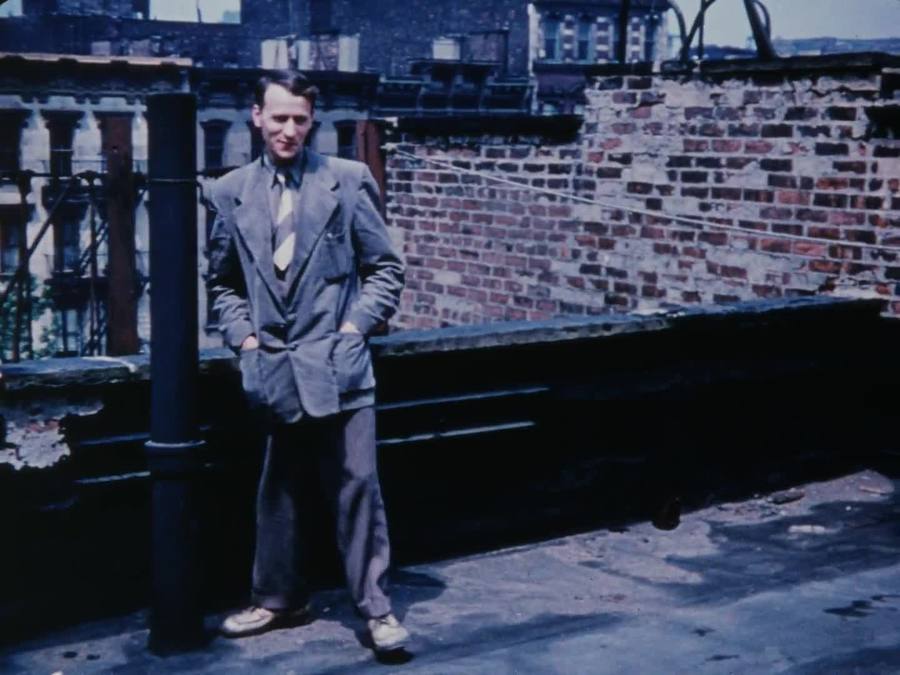There was a time in the 1960s when 414 Park Avenue South in New York City was the polestar of avant-garde cinema in America. It was not a movie theater, a museum or a gallery. It was the loft home of Jonas Mekas, exile, poet and hoarder, where he slept under his Moviola editing machine, and where he showed films. Visitors came to see the work of Stan Brakhage, Gregory Markopoulos, Shirley Clarke and many others. There were no chairs. Allen Ginsberg, John Cage, La Monte Young, Yoko Ono, Nam Jun Paik, Andy Warhol and even Salvador Dali were among those who came to Mekas’ loft to sit on the floor and watch films that couldn’t be seen in Manhattan’s grand movie palaces, where the bright stars of Hollywood danced and dazzled across the screen. This was underground cinema, independent cinema or “Oppositional Cinema,” as Mekas prefers to call it.
In January 1962, a group of about twenty-five filmmakers gathered in Mekas’ loft to form the Film-Makers’ Cooperative. They wished to explore new possibilities for distributing their independent, avant-garde films. Mekas and a few others had been meeting informally since 1960, and had formed the New American Cinema Group. Their idea was to produce and secure distribution for the group’s work, but they quickly discovered that existing distributors had peculiar tastes and personal motives, and when Cinema 16–then perhaps the most important distribution outlet for independent film in New York–rejected Stan Brakhage’s Anticipation of the Night, a decision was made. They established a cooperative, run for and by filmmakers, open to artists of all genders and backgrounds, outside of commercial restrictions, that would compile, archive and distribute the work of its members.

Over fifty years later, it still operates within these same principles, and has amassed the world’s largest collection of avant-garde and experimental films. “We don’t want false, polished, slick films,” Mekas declared in the mission statement released under the organization’s alternate name, New American Cinema Group. “We prefer them rough, unpolished, but alive; we don’t want rosy films–we want them the color of blood.”
Mekas and his community of underground filmmakers existed within the larger, fertile landscape of art in New York City–a place where the various disciplines of modern art were allowed to melt, informing new works that would come to define post-war painting, music, theater and dance in America. Filmmakers were already participating in this artistic boundary-pushing, but it was perhaps unique (at least within America) that their work was seen as art, in contrast to, and in some cases direct opposition to, the narrative entertainment being produced in Hollywood. In 1962, Clark said of the collective “We are creating the movie equivalent of Off Broadway, fresh and experimental and personal.”
Even as independent cinema became accepted and distributed by the mainstream movie industry in America, the vision of the men and women of the Film-Makers’ Cooperative, their art and their democratic ideal for collecting and sharing it, continued to be an extreme alternative to commercial film. Many of these artists saw their work in the lineage of John Cage and Jackson Pollock as much as Ford and Hitchcock. Short films, abstract, non-narrative, structuralist films, surrealism, films dealing with sexuality and life on the edges of convention, all found a home in the archives of the Film-Makers’ Cooperative, and remain there for anyone curious or adventurous enough to experience it. The rebellious spirit of Mekas and the other artists who cultivated this vital body of work continues to provide inspiration for filmmakers and audiences who crave cinema beyond its traditional boundaries.
It is on the surface perhaps strange that a Lithuanian exile became the custodian of avant-garde cinema in America. Mekas and his brother, Adolfas, left the farming village of Semeniškiai in Lithuania during the Second World War. They were captured by the Nazis en route to Vienna, and spent the final year of the war in a forced labor camp in Elmshorn, Germany. Having written anti-Stalinist poetry, Jonas was unable to return to Lithuania when the war ended. Both brothers spent four years in displaced persons camps around Europe, during which time Jonas studied philosophy.
In 1949, the U.N. Refugee Organization relocated them to New York City. By his second night, Jonas was at the movies, watching Jean Epstein’s The Fall of the House of Usher and Robert Weine‘s The Cabinet of Doctor Caligari at the New York Film Society. Being young and broke, and perhaps hungry, cold, making up for lost time or searching for romance, Mekas went from cinema to cinema, show to show. Forty-second Street had maybe fifteen movie houses between Eighth and Sixth Avenues, and Mekas spent all night watching films. His appetite was prodigious, and his diet was omnivorous; Westerns, comedies, newsreels, short subjects, post-war European cinema like De Sica‘s Bicycle Thieves and Bresson’s Pickpocket were all on the menu. The Museum of Modern Art screened older films, The Theodore Huff Society showed silents. He never missed the monthly programs at Amos Vogel’s Cinema 16, where he encountered American avant-garde film, particularly the work of Ukrainian-born filmmaker Maya Deren. Mekas would befriend Deren in the mid 1950s, but she quickly came to represent what avant-garde cinema was, its past–not its present and its future, which he conspired in creating.
Within two weeks of his arrival in New York, Mekas borrowed some money and purchased a 16mm Bolex film camera. He wrote scripts with his brother, attempting to get funding to make what he describes as semi-avant-garde documentaries and narratives. Even when he was broke, Mekas shot anyway, amassing footage of the Lithuanian community in Brooklyn, which later found its way into his films in the 1970s, Reminiscences of a Journey to Lithuania and Lost Lost Lost.
“Everything I created or helped create was done out of necessity,” he told the Guardian in 2012. Film Culture Magazine, which Mekas started with his brother in 1954, was born because they felt, as did their filmmaker friends, that there was no voice for them in America–nothing like Sight and Sound in Britain, or Cashiers du Cinema in France. Initially covering all forms of cinema, the magazine later focused primarily on the avant-garde. Andrew Sarris, who famously championed the auteur theory of film criticism, raising awareness of the role of the director in great filmmaking, began his writing career at Film Culture. Eugene Archer and later Peter Bogdanovich wrote for the magazine.

By 1958 Mekas also had a column in the Village Voice, “Movie Journal,” in which he defended nouvelle vague films and the work of Antonioni, and celebrated Marilyn Monroe as an actress. After seeing Stan Brakhage’s first New York show at the Living Theatre, Mekas began to see the division between the past and future of avant-garde film. He began organizing screenings, first at Gallery East, where he showed films by Kenneth Anger, Gregory Markopoulos and the Whitney Brothers. He then moved the screenings to his loft, which became the center to a remarkable orbit of stars in the universe of American art the second half of the twentieth century. Mekas didn’t even notice Andy Warhol there at first; he was just another quiet guy with blond hair sitting on his floor watching films. Mekas and Warhol later attended a performance of La Monte Young’s early minimalist music, which consisted of only a few notes stretched to four or five hours– after which Mekas would help Warhol film Empire, the artist’s eight-hour portrait of the Empire State Building.
But it was Mekas’ unique past that helped codify this group’s future. His father, a farmer, had often been too busy to attend meetings of the farmers’ cooperatives in Lithuania, and sent his son in his place. Mekas witnessed at a young age how these organizations were run and how they protected and benefited their members.
He was also influenced by his friend George Manciunas, a fellow Lithuanian living in New York City, whose father had been active in the cooperatives of Europe. Inspired by Dada and the ideas of John Cage, Manciunas started the Fluxus movement to “promote a revolutionary flood and tide in art.” Mekas observed how Manciunas developed a network outside of traditional galleries, concert halls and theaters for works by Young, Yoko Ono, Christo and others. There was a feeling among certain members of Fluxus that art’s traditional venues were, in George Brecht’s words, “mummifying.” By conceiving a home for cinema outside the structure of distributors and movie theaters, Mekas and his contemporaries were able to preserve a vitality and organic growth in their work, and this ethos has likely been a beacon for like-minded artists. When these filmmakers felt they weren’t going to be taken seriously by the film industry, they created their own film industry.
Mekas describes himself as an exile, as opposed to an immigrant, even going so far as to found a new community in which to exist as such. Now in his nineties, he continues to be heavily involved in the organization he helped create, and still makes films, mostly personal, often described as diary films, which have been screened throughout the world. His work and iconoclastic enthusiasm have inspired many, including Jim Jarmusch, Harmony Korine, John Waters and Mike Figgis. Commonly referred to as the “Godfather of the American Avant-Garde,” he prefers to describe himself as a “midwife,” protecting something new and fresh as it comes into the world.
Another important figure in the history of the Film-makers’ Cooperative was one of Clarke’s students. Born Mary Magdalene Serra. MM Serra has been the executive director of the Cooperative since 1991 and, inspirited by Mekas’ passion and dedication, maintains its original vision while stewarding the collection into the 21st century. Growing up in a conservative, working-class environment in Philadelphia, she was surrounded by Puritan ideas and repression. Both her grandfather and father were organizers in coal miner’s unions, which drew her to the Film-makers’ Cooperative’s community-based paradigm. Mentored by Shirley Clarke at UCLA, Serra began making a series of one-minute films.
“Shirley Clarke used to say if you could make a one minute film, you could make a feature. One minute is the essence of a film,” Serra said in an interview for the Film-makers’ Cooperative earlier this year. Her work is audacious, provocative and unique. Chop Off, her 2008 portrait of a man who practices self-amputation as performance art, exemplifies her desire to “represent a range of emotions that are censored in our culture–the abject body, not the erotic body for marketing or material gain,” as she said in a 2013 Villager interview. The film took her three years to make because nobody wanted to work on it, considering the film and its subject nauseating.
Her perseverance in realizing her distinctive profile of art and life encapsulates the spirit of the Film-Makers’ Cooperative, and its fifty years of collecting and nurturing oppositional cinema. “For me, the Film-Makers’ Cooperative represents the hub of personal vision,” Serra told The Villager. “It is the opportunity for everyone to have a community for their work.” She feels the archive reflects the raw history of media, individual perspective, and the art of filmmaking. “It’s not a singular preciousness. It’s inclusive, not exclusive. It’s not an effete, elite environment.” Under her leadership, the Cooperative’s board of directors and advisors has diversified. Alongside Mekas, Philip Glass and Ken Jacobs, about half the board are women. Anne Hanavan, Katherine Bauer, Sharon Greytak and others help keep the gender balance in the avant-garde a priority.
The Film-Makers’ Cooperative inspired many similar organizations throughout the world: Canyon Cinema in San Francisco, A Filmmakers’ Co-op in London, one in Los Angeles. Many of these groups have found it difficult, or impossible to survive, but the original New American Cinema Group/Film-Makers’ Cooperative is alive and well. Its collection contains over 5,000 works on 8mm, 16mm, and 35mm film, plus video and DVD, keeping with Mekas’ belief that if the work was under the control of a commercial distributor, and was not rented out, it would be forgotten or thrown away. At the Cooperative, it is kept and cared for, so it can be discovered or rediscovered.
This remarkable amassment includes early Dada films from the 1930s; a film reel bearing the Iron Cross, smuggled out of Nazi Germany by Hans Richter; and Samuel Beckett’s Film, a little-seen work that the French philosopher Gilles Deleuze considered one of the best Irish films of all time. These sit alongside the films of Mekas, Brakhage, Serra, Takahiko Iimura and Joel Schlemowitz. There’s also newer work, such as the technologically innovative digital shorts of Gregg Biermann, whose remarkable “camera-less films” incorporate scanned images and computer-manipulated pieces of classic Hollywood movies. The tasks of the co-op today, beyond maintaining the collection and staging events (such as Philip Glass performing to the films of Brakhage), is to preserve each work in its original format. In the case of film, this is an expensive task, and an urgent one, as some of the necessary chemicals may soon no longer be produced.
Digitalization of this work is also crucial. The technology now exists to share this body of work with audiences that may have never had access to it. Surely Mekas could never have envisioned being able to watch those same Brakhage films he first saw at the Living Theater on an iPad while riding the subway, but that is now possible. The Cooperative has begun working with streaming services (certainly film hoarders with a commensurate vision) to bring this vast and diverse archive to wider audiences and perhaps inspire a new generation of filmmakers. Somewhere out there is a whole new group of filmmakers ready to make movies “the color of blood.”






